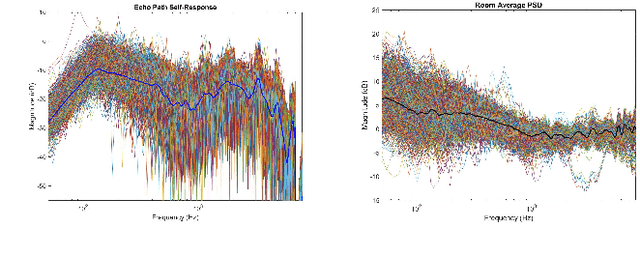Adib Mehrabi
Blind Acoustic Room Parameter Estimation Using Phase Features
Mar 13, 2023Abstract:Modeling room acoustics in a field setting involves some degree of blind parameter estimation from noisy and reverberant audio. Modern approaches leverage convolutional neural networks (CNNs) in tandem with time-frequency representation. Using short-time Fourier transforms to develop these spectrogram-like features has shown promising results, but this method implicitly discards a significant amount of audio information in the phase domain. Inspired by recent works in speech enhancement, we propose utilizing novel phase-related features to extend recent approaches to blindly estimate the so-called "reverberation fingerprint" parameters, namely, volume and RT60. The addition of these features is shown to outperform existing methods that rely solely on magnitude-based spectral features across a wide range of acoustics spaces. We evaluate the effectiveness of the deployment of these novel features in both single-parameter and multi-parameter estimation strategies, using a novel dataset that consists of publicly available room impulse responses (RIRs), synthesized RIRs, and in-house measurements of real acoustic spaces.
Acoustic Room Compensation Using Local PCA-based Room Average PSD Estimation
Jun 30, 2022



Abstract:Acoustic room compensation techniques, which allow a sound reproduction system to counteract undesired alteration to the sound scene due to excessive room resonances, have been widely studied. Extensive efforts have been reported to enlarge the region over which room equalization is effective and to contrast variations of room transfer functions in space. A speaker-tuning technology "Trueplay" allows users to compensate for undesired room effects over an extended listening area based on a spatially averaged power spectral density (PSD) of the room, which is conventionally measured using microphones on portable devices when users move around the room. In this work, we propose a novel system that leverages the measurement of the speaker echo path self-response to predict the room average PSD using a local PCA based approach. Experimental results confirm the effectiveness of the proposed estimation method, which further leads to a room compensation filter design that achieves a good sound similarity compared to the reference system with the ground-truth room average PSD while outperforming other systems that do not leverage the proposed estimator.
 Add to Chrome
Add to Chrome Add to Firefox
Add to Firefox Add to Edge
Add to Edge